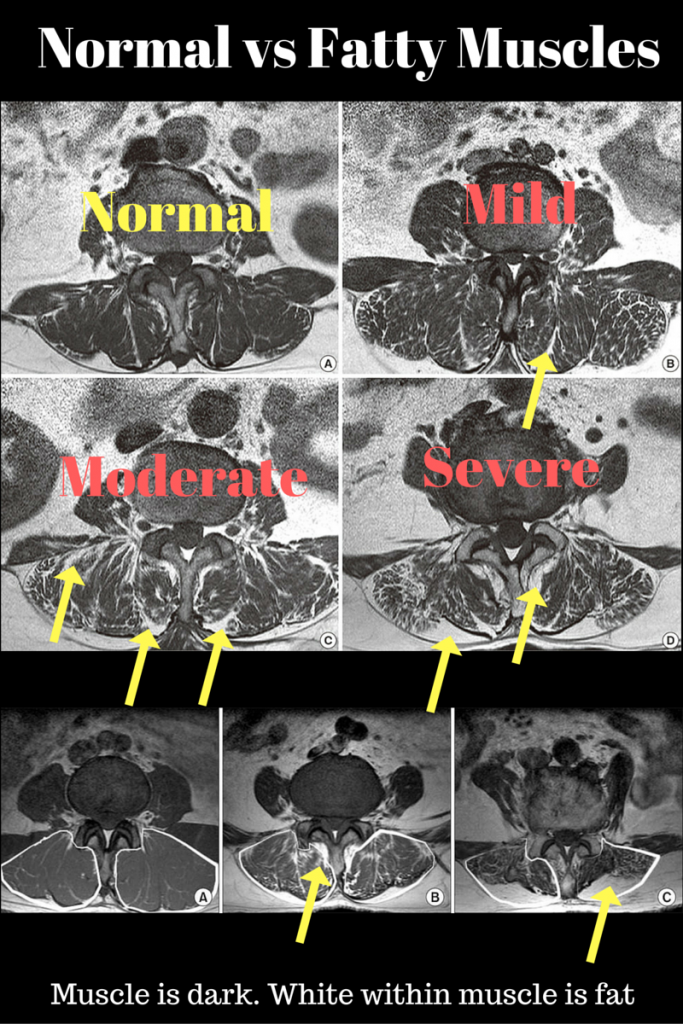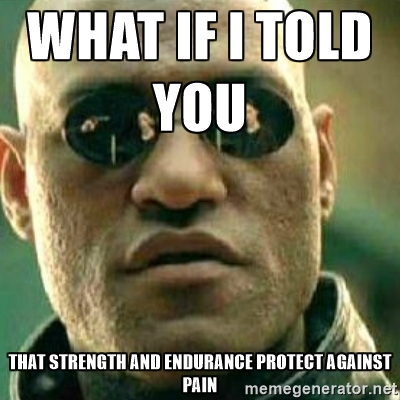Whiplash Disorders: Why You Should Get Your Fat Neck in Shape
By Dr. Jonathon Chung of Keystone Chiropractic
Read Time: [7-8 min]
I know it’s a little bit of a crazy headline, but today we’re going to talk about how a fat neck can contribute to chronic whiplash pain.
But I’m not talking about the width of someone’s neck. The neck I’m talking about can be thin on the surface, but have fat tissue build up in places where it shouldn’t. Namely, inside of your muscles.
It’s helped us to reveal a problem that many doctors miss when looking at conventional MRI findings.
Don’t Put So Much Stock in Disc Problems
For better or for worse, injuries from auto accidents are usually made or broken by MRI findings. That’s why your attorney has likely pushed you to get an MRI even though your doctor may have chosen against it.
If your doctor is like me, they avoid too jumping to MRI’s too quickly because sometimes it can really cause more harm than good. MRI’s give you the most highly detailed images available to the average consumer, but those extra details can be counterproductive.
In a patient’s eyes, an MRI report can be intimidating and scary. It’s common for most MRI reports to say things like:
- Disc herniation
- Degenerative changes
- Stenosis
- Loss of disc space
- etc
Which is fine if you’re a health care professional and you need to know what’s going on. However, a lot of patients will look at these words, do a quick google search, and end up looking like this: (Visit link and scroll down). http://chiropractorwellington.com/whiplash-disorders-why-you-should-get-your-fat-neck-in-shape/
There’s a couple things to remember when seeing some of your MRI findings:
- Many of these findings are seen in normal aging
- Just because it’s on an MRI doesn’t mean it’s causing your pain or condition
To add more insult to injury (pun intended), things like herniated and degenerated discs are very disempowering as a diagnosis. In most cases, those findings are going to stay with you throughout your life, and that’s okay because even healthy pain-free people will have it throughout their lives too!
….even healthy pain-free people will have have herniated and degenerated discs throughout their lives too!
Whiplash and Fatty Neck Muscles
Generally we all wish we had a little less fat around our waist lines. In recent years, researchers have been seeing that fat can build up in muscular tissue and is associated with problems of aging. You can read some more about the science behind this problem in a great article on the Strength Theory Blog here. This includes chronic pain which is the major concern for patients with whiplash.
Some recent studies are starting to show that identifying fat build up in your neck muscles can predict how well someone with whiplash will recover. [1, 2, 3, 4]
If you don’t want to read the abstracts, here’s the summary:
Patients with greater fat build up in neck muscles after an accident are more likely to have more persistent whiplash symptoms.
This runs counter to people with herniated discs because the presence of herniations is generally a poor predictor of pain.

The problem with fatty muscles is that they don’t work the same way as lean muscle. Fatty muscle tissue is weaker in strength and endurance than lean muscle tissue.
But if you’re in pain, you don’t really care that much about your strength and endurance. You just want to feel better. As my friend Morpheus from the Matrix says:

When muscle tissue becomes dysfunctional, your body loses a valuable neurological input to the brain that helps to modulate pain. That’s why exercise is such an effective form of medicine for people with various types of pain.
On top of that, when fat builds up in muscle tissue, it has neuroendocrine effects on the muscle tissue itself. These effects include:
- Reducing sensitivity of muscle to insulin (Translation: muscle won’t eat as much sugar as it normally does)
- Reducing Kreb’s cycle activity of muscle (Translation: muscle won’t use energy as efficiently)
- Increasing the release of pro-inflammatory cytokines (Translation: more inflammation around muscle –> More pain)
Ultimately, fatty muscle tissue effects how the muscle contracts, how the muscle eats, how the muscle digests, and it predisposes your muscles to pain and inflammation.
While the evidence is still pretty new , it does seem to reflect why people who are stronger and have more muscle seem to be more resilient to pain problems.
Unlike Bad Discs, This Problem is Fixable
Fatty muscles can result from prolonged periods of inactivity. So it seems like a pretty simple fix. Move more, exercise, and get stronger. A small study on exercise for women with whiplash disorders show that neck exercise can reduce fat content in neck muscles and improve someone’s prognosis, so it does look like this problem is fixable. [Source]
However, one of the things that triggers inactivity after a whiplash accident is the immediate pain itself. When you have a whiplash, even small amounts of movement tend to be painful or instigate symptoms. The thought of exercising just sounds….painful.
So what can you do after an accident? Fortunately, these same rules apply with or without an MRI.
- Get the initial pain under control – There’s no shortage of therapies that can help control pain. Some use ice, heat, TENS, acupuncture, spinal manipulation, massage, meds, etc. In order for you to get your body moving, you have to overcome the fear of movement that pain can cause.
- Position Matters – the ability to control the position of the neck is a key piece in normal movement. Developing this control depends heavily on establishing normal structure and normal positioning of the neck. This is where a structural approach to chiropractic plays a major role in recovery.Abnormal loading of the joints in your neck from Atlas Displacement Complex can contribute to pain, but it also can lead to Secondary problems like vertigo, headache, and brain fog after a whiplash.
- Gradual Progressive Loading – As the neck feels better and your positioning improves, you will want to gradually increase the strength of the muscles in the neck. Basic neck exercises like the chin tuck and chin nod can help train the small deep muscles of the neck. As the muscles get stronger and more functional, you will protect your muscles from fatty degeneration.Starting slow and gradually building up the resistance and endurance of your neck muscles is a key step in getting a good long term result after a car accident.
With a great understanding of the problems associated from chronic whiplash, we can utilize better tools to make sure that you don’t become a victim to chronic pain.

